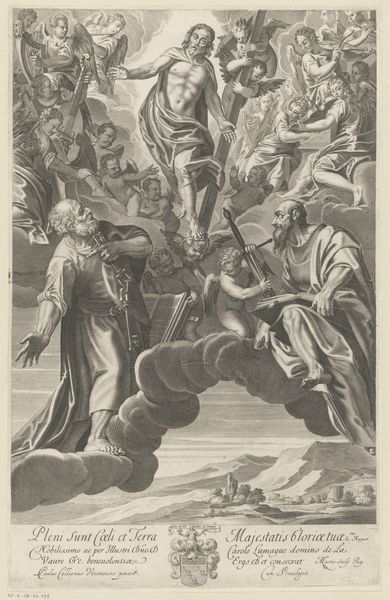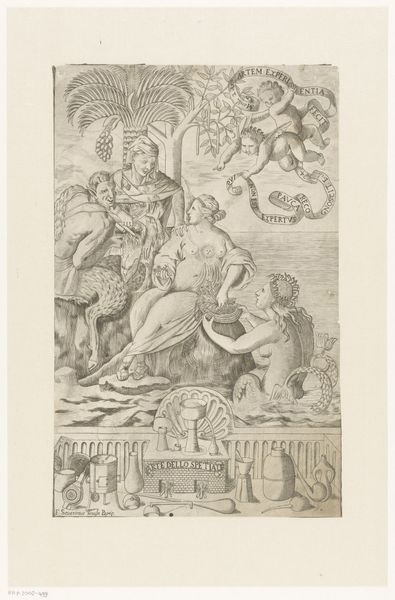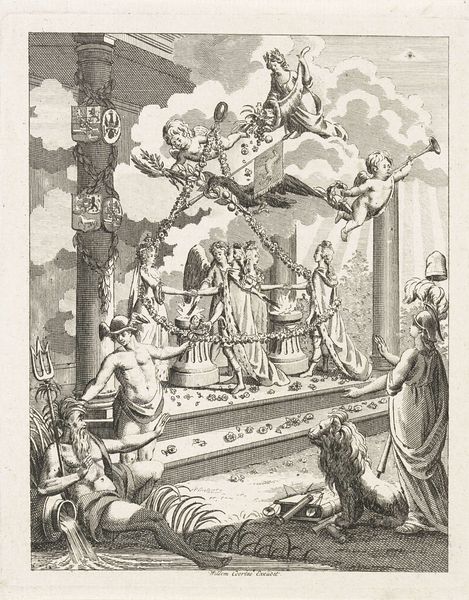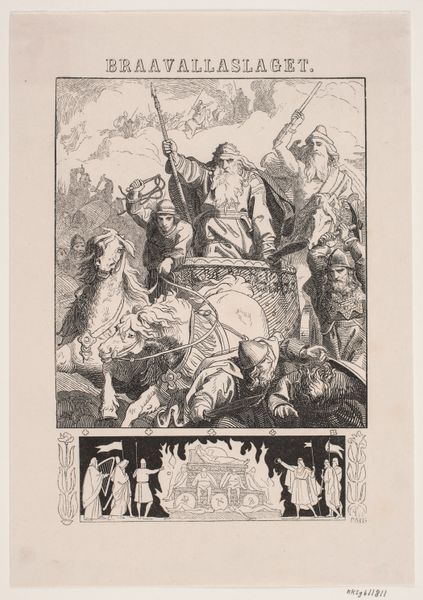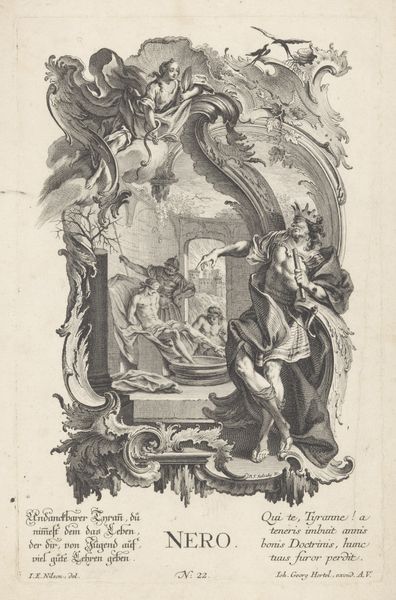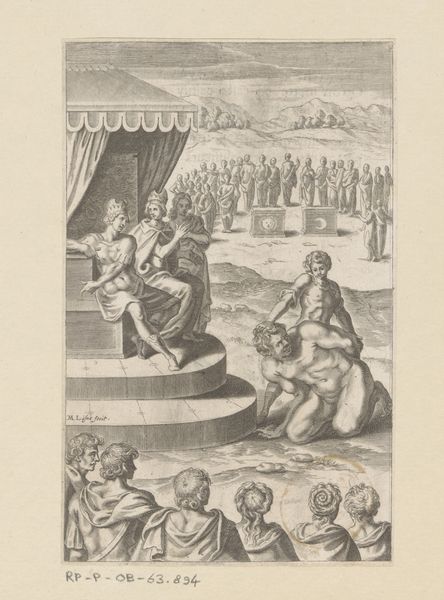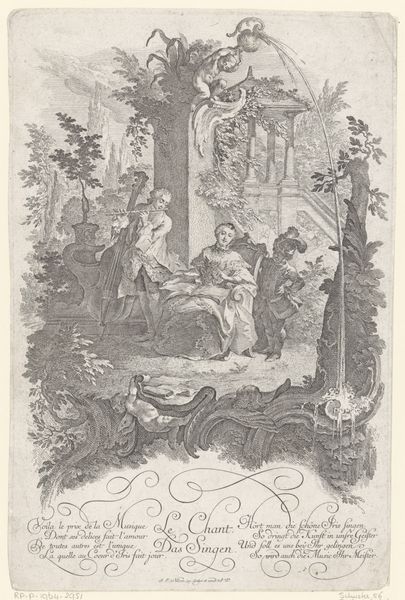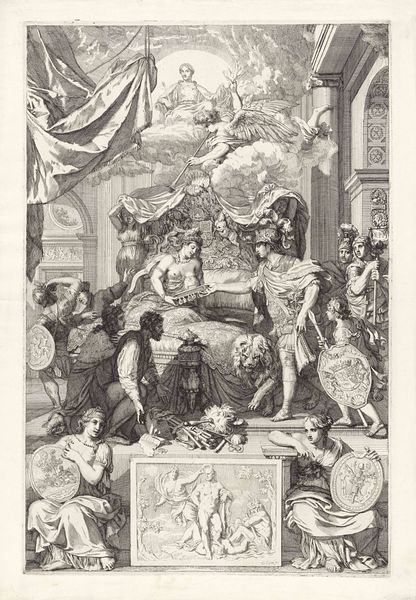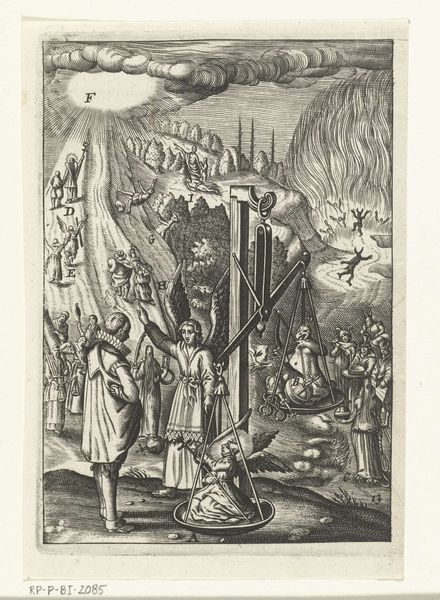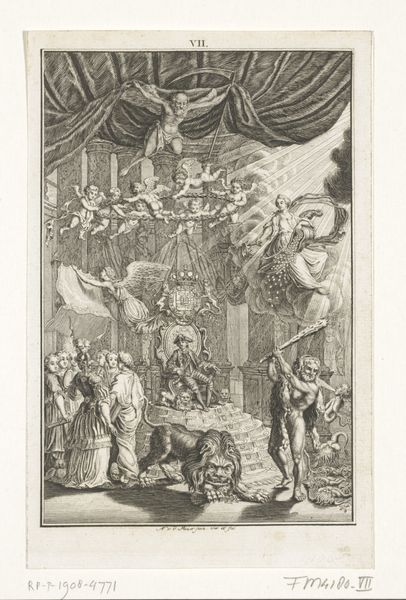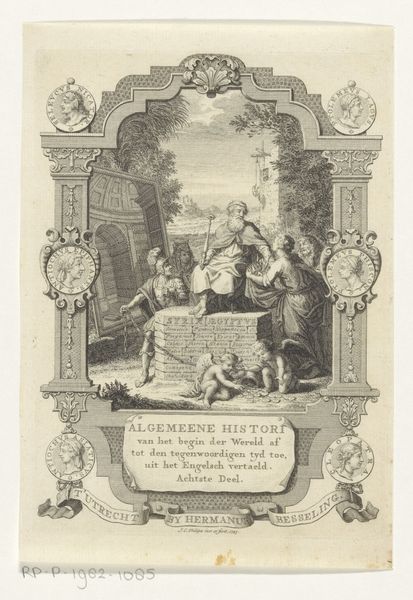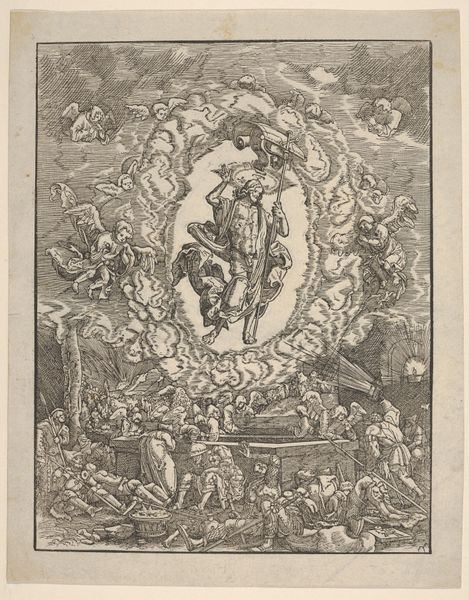
engraving
#
portrait
#
allegory
#
baroque
#
classical-realism
#
figuration
#
line
#
history-painting
#
engraving
Dimensions: height 465 mm, width 303 mm
Copyright: Rijks Museum: Open Domain
Gustav Adolph Müller created this portrait of Joseph the First, Holy Roman Emperor. It’s an engraving, made by incising lines into a metal plate, applying ink, and then using a press to transfer the image onto paper. Engraving was a highly skilled, laborious process. It demanded careful planning and precise handwork to achieve fine detail and tonal variation, as you can see here. The engraver’s skill would have been highly valued, and his workshop dependent on a network of suppliers and patrons. The material qualities of the print – its black lines on a white ground – lend a sense of clarity and order that speaks to Joseph’s authority. Yet, the medium also allows for a certain level of detail and visual complexity, like the coats of arms and allegorical figures, which amplify the Emperor’s power. Prints like this played a crucial role in disseminating images and ideas. As a multiple, it could reach a broad audience, reinforcing social hierarchies and systems of power. So, next time you look at an engraving, consider the intricate labor and social context embedded in its lines.
Comments
No comments
Be the first to comment and join the conversation on the ultimate creative platform.
